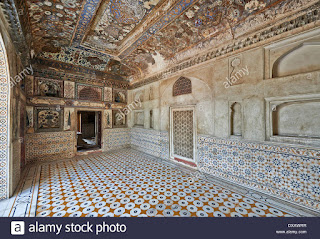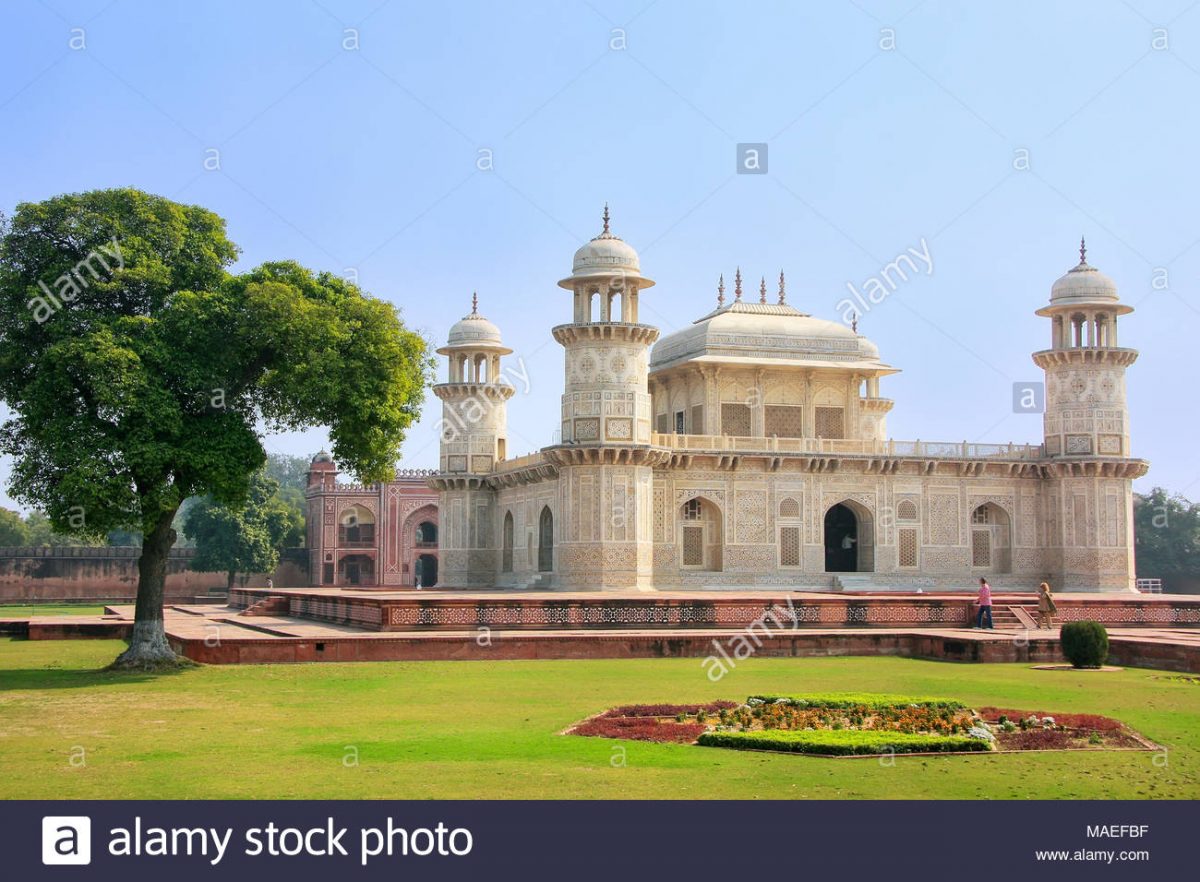ॐ श्री गुरुभ्यो नमः ॐ श्री शिवानन्दाय नमः ॐ श्री चिदानन्दाय नमः ॐ श्री दुर्गायै नमः
Source of all Images in this Blog-post : Google Images : ‘Google Image Search’ will reveal the multiple sources of every single image shared in this Blog. For more details, kindly see ‘Disclaimer‘

Tomb of I’timād-ud-Daulah is a Mughal Mausoleum in the city of Agra in the Indian State of Uttar Pradesh.

Often described as a “Jewel Box”, & sometimes called the “Baby Tāj”, the tomb of I’timād-ud-Daulah is often regarded as a draft of the world-renowned Tāj Mahal.

Along with the main building, the structure consists of numerous other buildings and gardens.

The tomb, a specimen of the great Mughal Architecture, is primarily built from red sandstone with marble decorations.

The Mausoleum was commissioned by Nūr Jahān, the wife of Mughal Emperor Jahangir, for her father Mirzā Ghiyās Beg.

Located on the right bank of the Yamuna River, the Mausoleum is set in a large garden criss-crossed by water courses and walkways.

The walls of the Mausoleum are made up from white marble from Rajasthan.

The Mausoleum is encrusted with semi-precious stones, like Cornelian, Jasper, Lapis Lazuli, Onyx, and Topaz, formed into images of cypress trees and wine bottles, & elaborate decorations like cut fruit or vases containing bouquets.

The interiors of this structure is considered by many, to have been inspired by the Mughal architectural marvel Taj Mahal of Agra.


More information on the Tomb / Mausoleum of Itimad-ud-Daulah of Agra in India, with web-links to the sources of the following historical images , will follow soon.
Stay tuned, & please don’t miss the joy of exploring the countless, marvelous, centuries-old & some even millenia-old historical monuments of a culturally rich, & unusually vibrant country like India, at least virtually first, to begin with.
